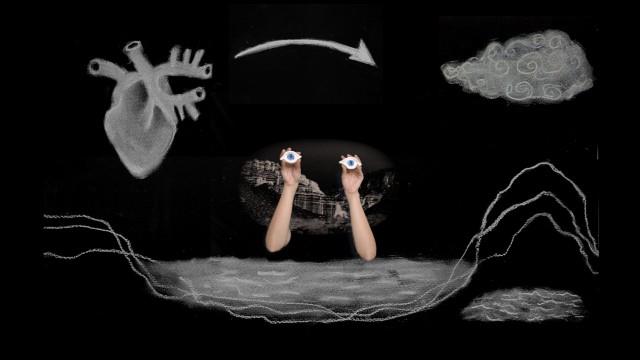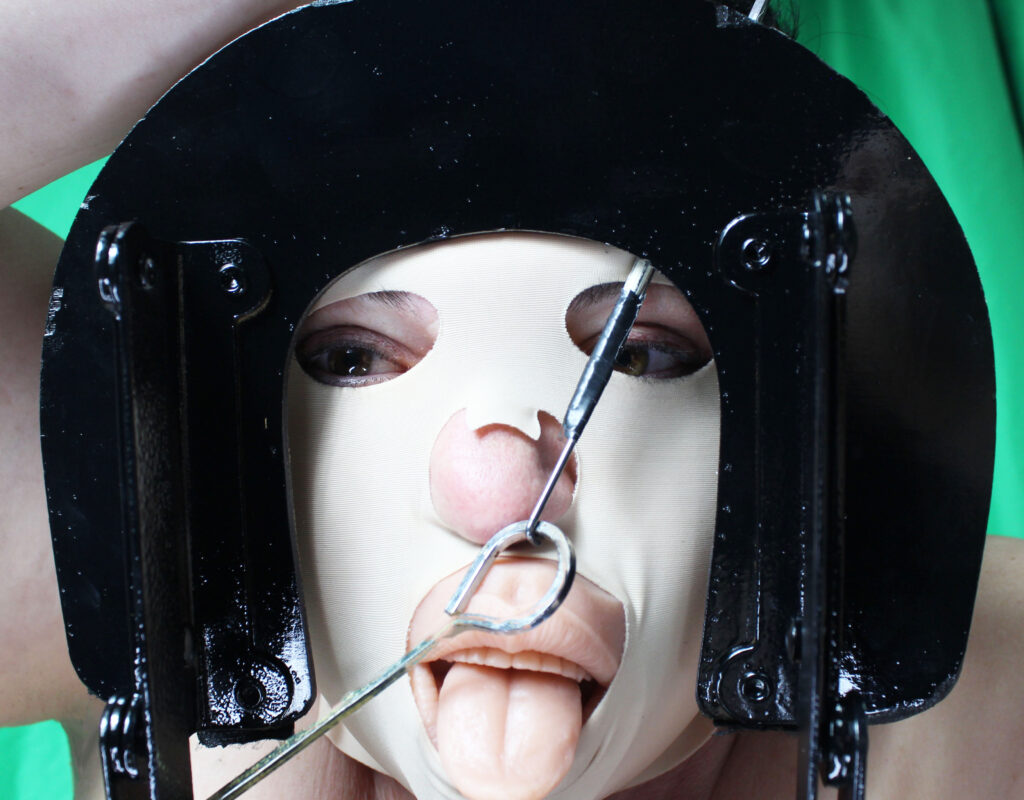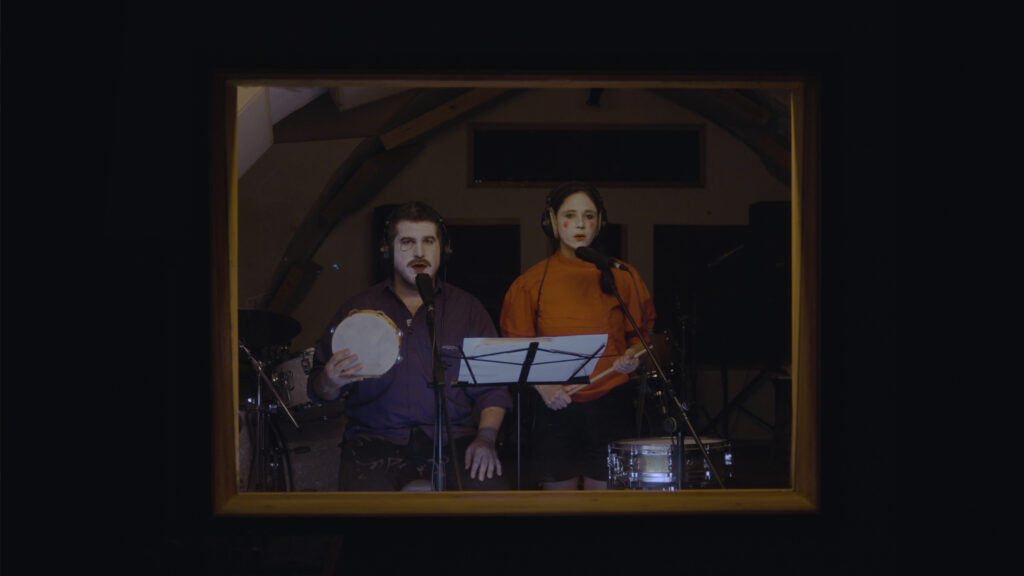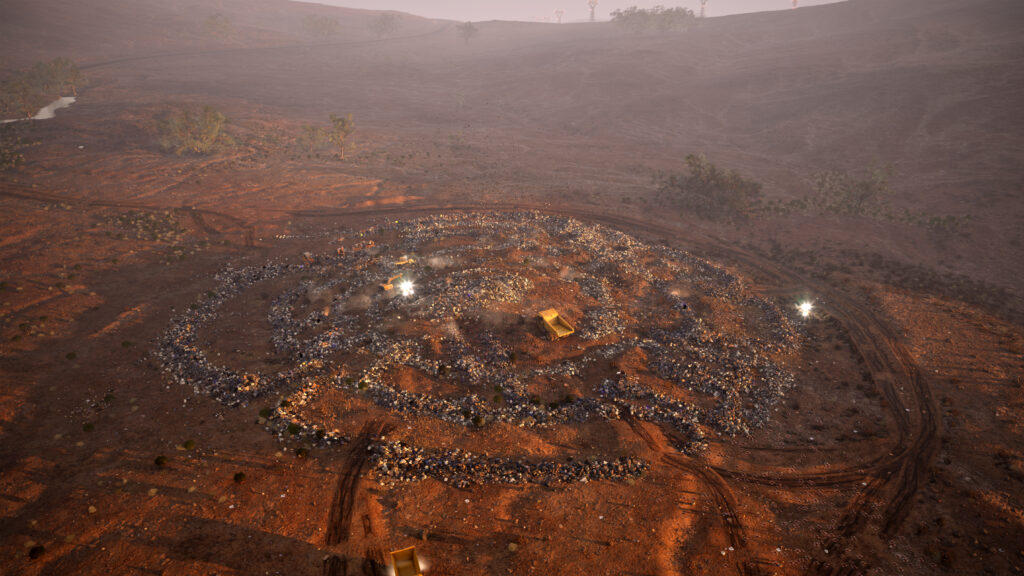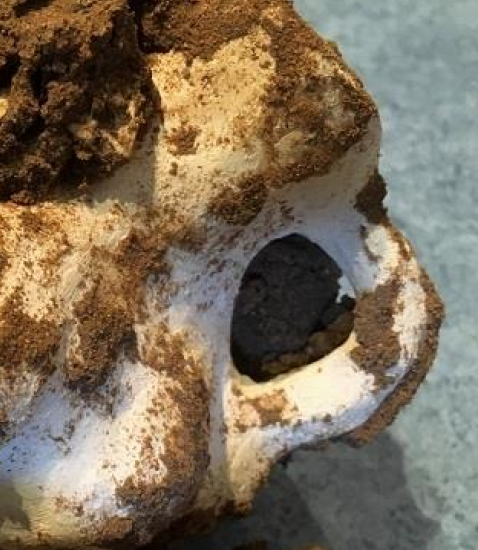Water Affair
- Opening date: 23/10/2021
An exhibition that delves into the world of water, tracing back to the origins, to the moment of creation, to the essence of existence. It raises questions about the distinction between matter and spirit, high and low, man and nature. At the heart of this dichotomous thought lies the myth of creation, the monotheistic myth upon which Western society is organized. Everything began with water, and the differentiation between water and everything else allowed for the very act of creation. However, thinking about water does not necessitate separation. When thinking about water through a holistic, primarily Eastern lens, they are part of the fundamental elements that make up the entire world of phenomena. Just as the primary colors form the basis for all other colors in the spectrum, the elements of nature exist in everything and collectively influence every aspect of earthly existence: physical, social, economic, and, of course, political. The disruption of balance among these elements generates a chain reaction with challenging consequences.
Climate change, as a blatant disruption of this balance, brings extreme effects on all the elements: the earth shakes, fire spreads, the air becomes polluted, temperatures rise, and water, water rises in certain areas and disappears completely in others.
Water isn’t just the substance that sustains all life on Earth; it also carries the cultural load of human life. It has market value – as a beverage, as a productive force, as a currency of exchange, as symbolic representation. It carries the commodities of the global world, facilitating its constant movement. It carries our sins against nature; it is both the punishment and the reward. It is present in every product, in every creation, in every plant. It is the network of the world’s arteries and veins. When the glaciers melt in the northern polar region, the waters of the Mediterranean Sea rise. When oil spills on the shores of Canada, fishermen in Bangladesh are affected.
This global food chain encounters humanity’s persistent attempt to create boundaries between territories, peoples, and nations. But water transcends borders. More than 263 lakes and rivers in the world flow through more than one country, covering over half of the Earth’s surface. Approximately 300 aquifers cross more than one border and provide drinking water for two billion people worldwide. Water has no interest in nationalism, it has no interest in ideology, it doesn’t really care if Ethiopians sit upstream and Egyptians downstream; they are in constant motion, and when they encounter an obstacle, like a dam, they erode it or overflow, find alternative routes, or simply adapt. The interaction between human determination to control nature and the power of water to move creates a myriad of conflicts but also fosters connections, compromises, and collaborations.
A plethora of metaphors accompany thoughts about water: flowing water, standing water, polluted water, living water, underwater, above water, a sea of disputes, the source of life, clear water, turbulent water. Water is in everything; it is the substance itself, and therefore, its heightened presence in language, in the world of representation, in the act of mediation.
This exhibition is not the only one focused on water. We are in the midst of a flood, with art institutions, environmental organizations, and independent artists all responding to the urgent need to address the climate catastrophe, while reconnecting to the life fluid. Indeed, in times when the question of the future of water, and therefore humanity, is concrete and pressing, the relevance of embarking on another journey following the water’s path is thrilling. Balancing the urge to flood the subject and to mediate it to the public as an aesthetic, educational, and political act is at the heart of the “Water Exodus.”
The starting point for this exhibition is a collaborative study by a group that explored the local political, social, and ecological network of water. The group work is part of an ongoing methodology at the Center for Digital Art, in which collective knowledge emerges from a comprehensive process involving meetings with experts, real-world tours, and virtual space tours. The various fields of knowledge we explored – ecological, historical, economic, planning, and cultural – were processed and adapted into the artworks presented in the exhibition. The exhibition departs from intimate encounters with water and oscillates between various interpretations, local, regional, and international.
“Water Affair” takes place as part of an ongoing collaboration with the Ghetto Institute and as part of a wide-reaching regional project, the Atlas of Mediterranean Research-Art and Interactive project about the Mediterranean Sea.
The Atlas of Mediterranean Liquidity is a digital platform consisting of maps, each starting from a research-artistic perspective related to water. The Atlas enables a multiplicity of views and representations to coexist under one roof, without hierarchy. Water, often at the heart of conflicts, demands a flexible and fluid platform that allows multiple voices to find expression. The Atlas invites artists from around the Mediterranean to develop multi-faceted maps on topics related to climate change, culture, folklore, economics, geography, and politics, deepening our knowledge and understanding of pressing issues related to water. Currently, the Atlas includes three original maps, with additional maps from various partners around the Mediterranean to be added in the coming years.
Curators:
Udi Edelman and Avital Barak
Artists:
Artists: Maya Attoun, Ursula Biemann, Alex Ben Ari, Michal Baror, Amit Hachamov, Shavit Yaakov, Ella Littwitz, Dani Meir, Elad Medan, Santiago Mostyn, Ivica Mitrovic, and Oleg Suran, Hagar Cygler, Dan Ozeri, Haviv Kaptzon, Irai Raveh, Maayan Shahar.
The exhibition was funded with the support of Goethe Institute:

